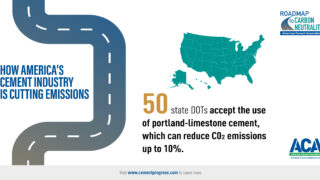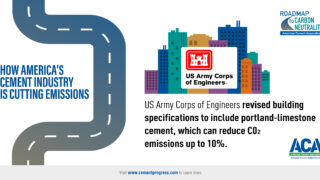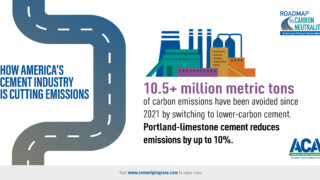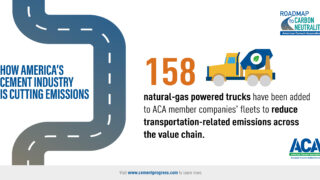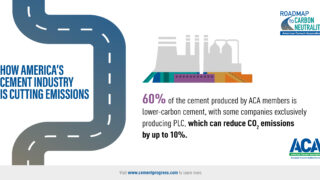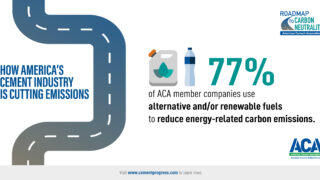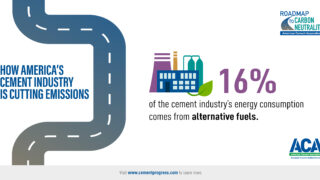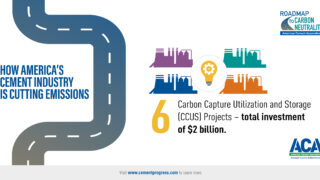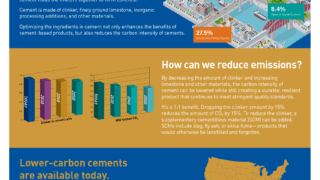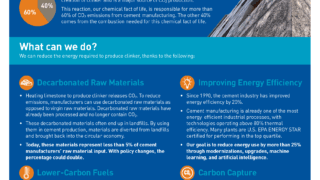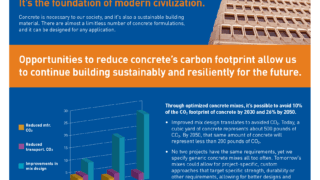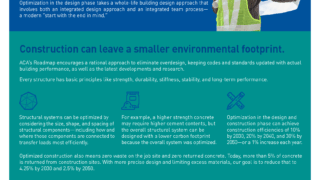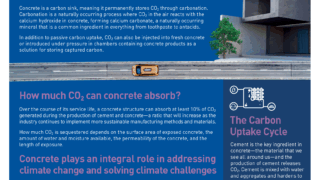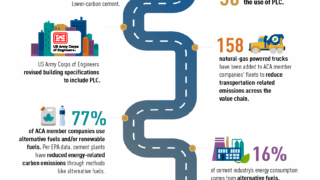
Marketing Toolkit
A Toolkit for the Industry
This American Cement Association toolkit contains resources you can use to communicate information about the cement and concrete industry, including our efforts toward safe and sustainable built environment.
Download and share videos, social media assets, infographics, and essential one-pagers to convey the fast facts on cement and concrete easily.
Videos
These videos help explain the importance of cement and concrete to the nation’s built environment and illuminate our sustainability efforts.
Concrete has influenced all our lives. This video shows how.
Share the details of our route to a carbon-free industry by 2050—or sooner.
Most people are unaware that concrete can act as a CO2 sink.
Social Media Posts and Graphics
These social-media graphics will increase your audience’s awareness of the cement and concrete business’s sustainability efforts.
This graphic shows the widespread acceptance of portland-limestone cement by state Departments of Transportation.
Share this graphic to show that the U.S. Army Corps of Engineers has revised building specifications to include portland-limestone cement.
Lower-carbon cement helped curtail more than 10.5 million metric tons of carbon emissions since 2021. This graphic shows how. *Source: ACA Market Intelligence Group
Share a graphic that shows ACA members adding 158 natural-gas vehicles to their companies’ fleets to reduce transportation-related emissions.
ACA members universally produce portland-limestone cement, which can reduce emissions by 10%.
This graphic shows that 77% of ACA member company plants reduce energy-related carbon emissions by using alternative and/or renewable energy.
Share that 16% of the U.S. cement industry’s energy consumption comes from alternative fuels.
Six industry carbon capture utilization and storage projects that have earned a total investment of $2 billion.
ACA Value Chain One-Pagers
Download these important info sheets to share expert overviews of emissions reductions in cement and concrete.
It is part of concrete which is a key material in community infrastructure—and lower-carbon alternatives are here.
Cement’s essential reactive ingredient is a major source of CO2 emissions in cement manufacturing, and one of our top priorities in reaching carbon neutrality.
It’s the second-most used material on Earth after water. We’re taking serious steps to reduce its carbon footprint.
Sustainable cities are rising. Advances in building mean sustainability and resiliency go hand in hand.
Most people don’t realize that concrete absorbs CO2 like a sink.
Explore eight ways the U.S. cement industry is curbing CO2 emissions.



